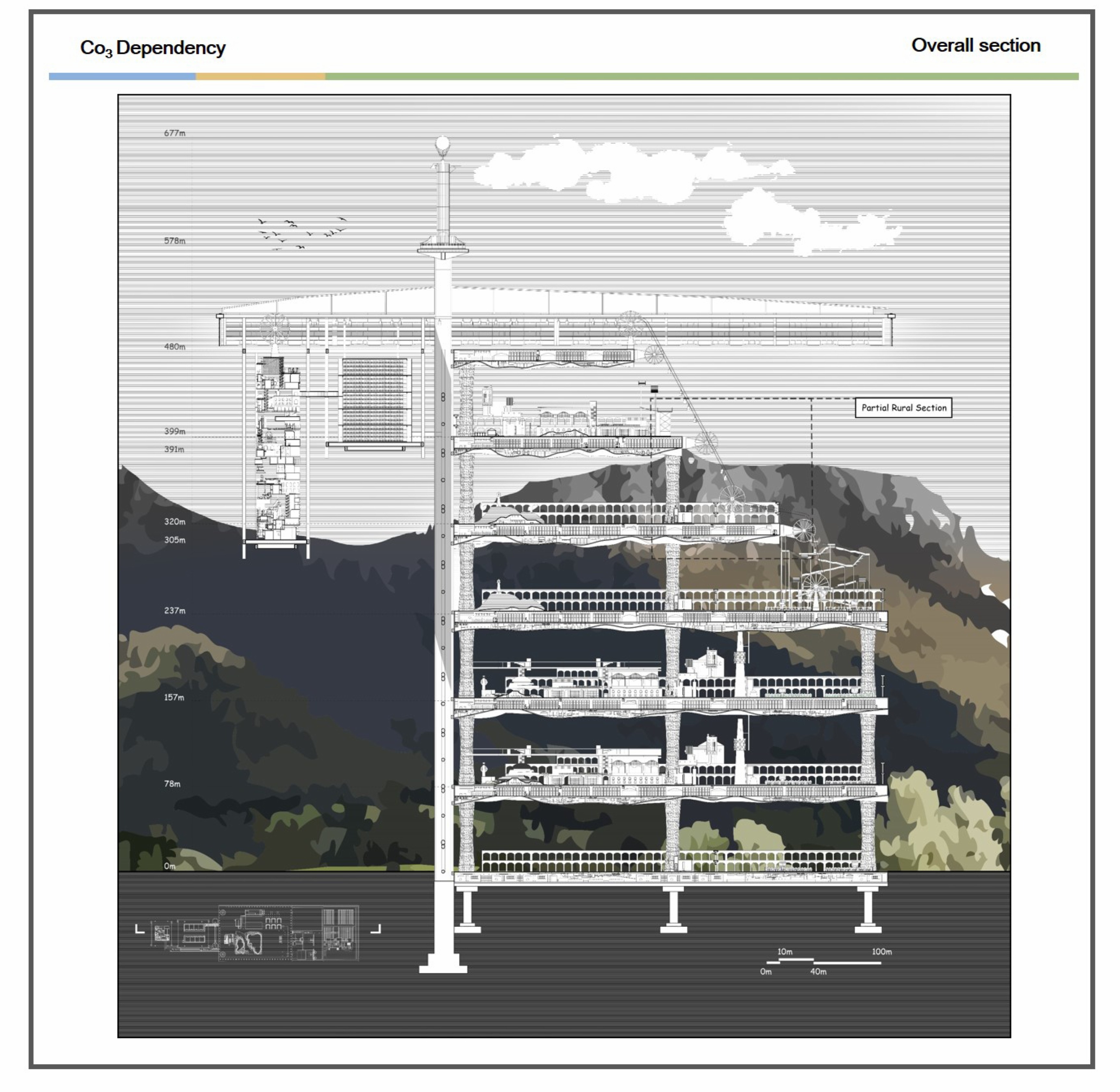Melbourne School of Design Studio:
The Ark
Studio Leader: Laura Martires
_
What if you could never leave your building?
Can we live where we work? Can we work, play, make, culture, healthcare where we live? What would that look like and how would it change the way our buildings are designed?
2020 brought with it a torrent of new challenges and the highlighting of ‘old’ ones in need of urgent addressing. We are now realising that we are all interconnected at the macro and micro level. Whilst at first glance, these problems might appear to sit outside architectural discourse and scope, the reality is the design of our living environments and the speculation on future architectural typologies has never been so critical. The lockdown of our cities has triggered a dramatic collapse of our urban environments, with large sections of our cities now dormant or redundant. While this presents obvious economic and social challenges, this could provide an opportunity to radically rethink our cities. If you are born, live, work, make, consume, play, heal and die in the same space, in a framework of total shared, negotiated, overlapping and fluid mixed use, there is the potential to cut the physical and environmental footprint of human inhabitation.
This studio aims to speculate on the future of our living spaces and the implications these could have for our cities when the need to leave our address is eliminated. In a world where everything is indoors, it would make sense to draw on urbanism and urban thinking as a mechanism for architectural organisation, planning and programming.
Conventional architectural and urban design strategies generally view the city as static, when in fact the urban environment is a dynamic field of interrelated elements that are in a constant process of change, resulting in the continual production of new hybrid architectural types and forms.
This studio will start here and build upon these questions to design an ‘Ark’ in Melbourne. Students will be asked to work within vertical ‘containers’ and design new modes of programmatic organisations addressing questions of circulation for people, goods, waste or information. Rather than focusing on questions of formal composition, the studio aims to address the systems that can be set in place allowing us to survive in relative ‘isolation’ but most importantly, thrive. Students are asked to determine which programs are essential and which ones are superfluous as well as develop a critical position on architectural program. As the studio unfolds students develop a proposal for a future living environment which operates as a self contained habitation ‘Ark’, a circular urban environment contained within a building that contains all the things necessary for daily life. Students are asked to form political positions around the things that are most essential to us, what we must give away and how we structure our life around a building.
These issues will be explored through processes of negotiation and gamification, reconsidering these approaches as critical for speculating on new modes of living and the architectural typologies that might support this. The studio will challenge the designer to work through acts of ingenuity or negotiation in an incremental fashion rather than the authoring of a single big idea, or the choreographing of a process.
The Ark is an opportunity to explore ideas about the future of our living environments through the lens of negotiation, gamified processes and generative experimentation.
‘Co3Dependency – Growing Lives in the midst of a burning waste’
_
Students:
Minjie Liang, Kaylin Yee Yeoh and Hongyu Wei
The project focuses on how architecture can provide humans with an alternative way of thinking and shaping the city and landscape while dealing with tragedies beyond their control. In our ark, everybody is working towards survival. The Ark provides more than just a model for surviving, it aims to sustain humanity’s capacity to live a comfortable life, where people can still enjoy themselves and coexist with nature in a respectful way.
Manifesto
1. We will now live in The Ark, protected from the heat, smoke and pollution;
2. The Ark provides a new life, only certain urban programs will be retained;
3. We will be self-sufficient, each individual responsible for producing their own food for survival;
4. Lifestyles will change. We will practice a living style with limited resources, where access to all things is made in moderation;
5. We will strive to live a comfortable and enjoyable lifestyle while coexisting and respecting Nature.
The Ark traps people inside in a never ending loop in which to survive you must accept you’re living in a prison where work is forever ahead of you. The façade is burnt and scarred by the marks of the burning landscape after decades of environmental abuse. As the colorful interiors fade away, humans eventually forget about a time where they were free to roam the landscape, consume everything as they please and live a life of multiple choices. Our Ark represents a condition in which we are the prisoners of our own actions and the punished subjects of our human condition.








